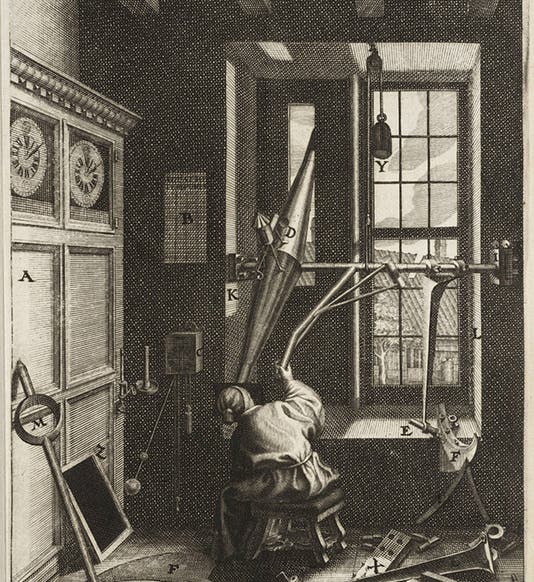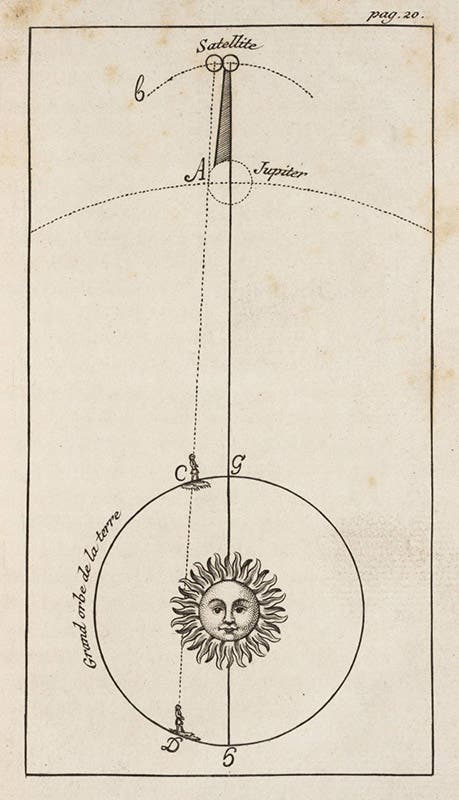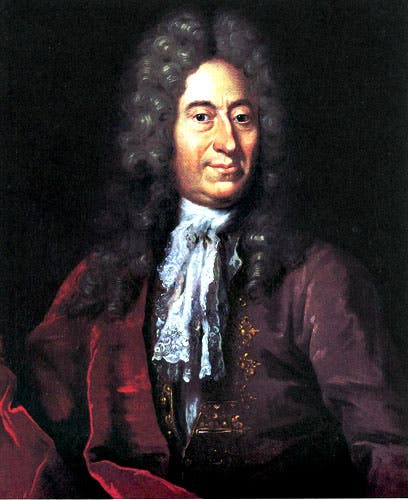Scientist of the Day - Ole Rømer
Ole Rømer, a Danish astronomer, was born on Sep. 25, 1644. Rømer is best known for the 8 years he spent at the Paris Observatory, where he was the first to determine, from a study of the moons of Jupiter, that light has a finite speed. His colleague in Paris, Giovanni Domenico Cassini, had published very accurate tables of the motions of Jupiter's moons, indicating precisely when each one went into eclipse, and when they re-appeared. Rømer noticed that sometimes the eclipses were up to 10 minutes early, and sometimes they were 10 minutes late. He was able to correlate the discrepancies to Jupiter's position relative to the earth; when Jupiter was on the far side of the Sun, the eclipses were late, but when Jupiter was closest to Earth, the eclipses were early. It must be, Rømer concluded, that it takes light 20 minutes to cross the orbit of the earth. The size of the Earth's orbit was not known at the time, so Rømer could not calculate the speed of light. But he did discover that it has a finite speed, destroying one of the tenets of Cartesian natural philosophy. The diagram (second image) is from Voltaire's Elémens de la philosophie de Neuton (1738).
In 1680, Rømer returned to Copenhagen, was appointed professor of astronomy at the University, and spent the remainder of his career using specially constructed instruments, such as his transit instrument (first image), to make detailed observations of the planets and stars. The instruments, property of the University, were installed on the top of the famous Rundetårn or Round Tower in Copenhagen (third image).
Rømer was not happy with the observing conditions at the Tower (it was often windy), so he built his own small observatory outside the city. Unfortunately, in 1728, after his death, a terrible fire raced through downtown Copenhagen, and although the stone tower survived, all of Rømer’s instruments and observations perished in the conflagration. Fortunately, his pupil and colleague Peder Horrobow published in 1735 a description of Rømer’s life and work, from which the other engravings here were taken.
The portrait of Rømer was made about 1700 and hangs in the Fredericksborg Palace in Hillerød, Denmark.
Dr. William B. Ashworth, Jr., Consultant for the History of Science, Linda Hall Library and Associate Professor, Department of History, University of Missouri-Kansas City. Comments or corrections are welcome; please direct to ashworthw@umkc.edu.









